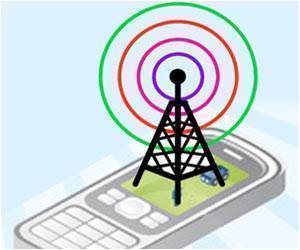Citizens have no reason to panic as mobile towers emit low level radiation, which is within the prescribed DoT, government of India.

‘Citizens have no reason to panic as mobile towers emit low level radiation, which is within the prescribed DoT, government of India, norms which makes mobile towers completely safe.’





"For the telecom industry consumer health and interest are paramount. The industry appeals to the citizens and the public to not panic and read the interim order in its entirety. There are four EMF related cases which have been clubbed together. The interim SC order relates to only one of them whereas cell towers included in the other cases were left untouched," said Rajan S. Mathews, Director General of COAI. "Citizens have no reason to panic as mobile towers emit low level radiation, which is within the prescribed DoT, government of India, norms which makes mobile towers completely safe," he said in a release.
The report by the Times of India said that Harish Chand Tiwari, who works at the residence of Prakash Sharma in the Dal Bazar area of Gwalior, moved the Supreme Court complaining that a BSNL tower illegally installed on a neighbour's rooftop in 2002 had exposed him to harmful radiation for the last 14 years.
In its order, a bench of Justice Ranjan Gogoi and Justice Navin Sinha said: "We direct that the particular mobile tower shall be deactivated by BSNL within seven days from today."
Mathews said eight high courts had earlier held that radiation emanating from mobile towers were not hazardous to human health.
Advertisement
Mathews said authorities regularly checked and monitored mobile towers for emission and imposed high penalties in case of any violation.
Advertisement
As a precaution, the DoT has already maintained emission limits in India at 1/10th of the recommended global standards by the International Commission on Non-Ionizing Radiation Protection, making them one of the strictest norms existing anywhere across the world.
The World Health Organization in 2010 had quoted Director of International Agency for Research on Cancer Christopher Wild as saying that "an increased risk of brain cancer is not established from the data from Interphone."
The Interphone Study Group had carried extensive case studies in 13 countries for the agency, which is part of the WHO.
WHO, in another note on radio frequency (RF) transmitters, said: "Over the past 15 years, studies examining a potential relationship between RF transmitters and cancer have been published. These studies have not provided evidence that RF exposure from the transmitters increases the risk of cancer." However, the WHO has also called for further, more extensive studies since mobile phone usage has grown exponentially.
According to Mathews, the Allahabad High Court had instituted an expert committee which found that currently there was "no conclusive scientific evidence" to establish that EMF had harmful effect on human health.
He said the Supreme Court had asked COAI to submit reports and other relevant documents which it would do shortly. "We believe the final order will take a comprehensive view of the matter after taking into consideration all the supplied material evidence," Mathews said.
Source-IANS









